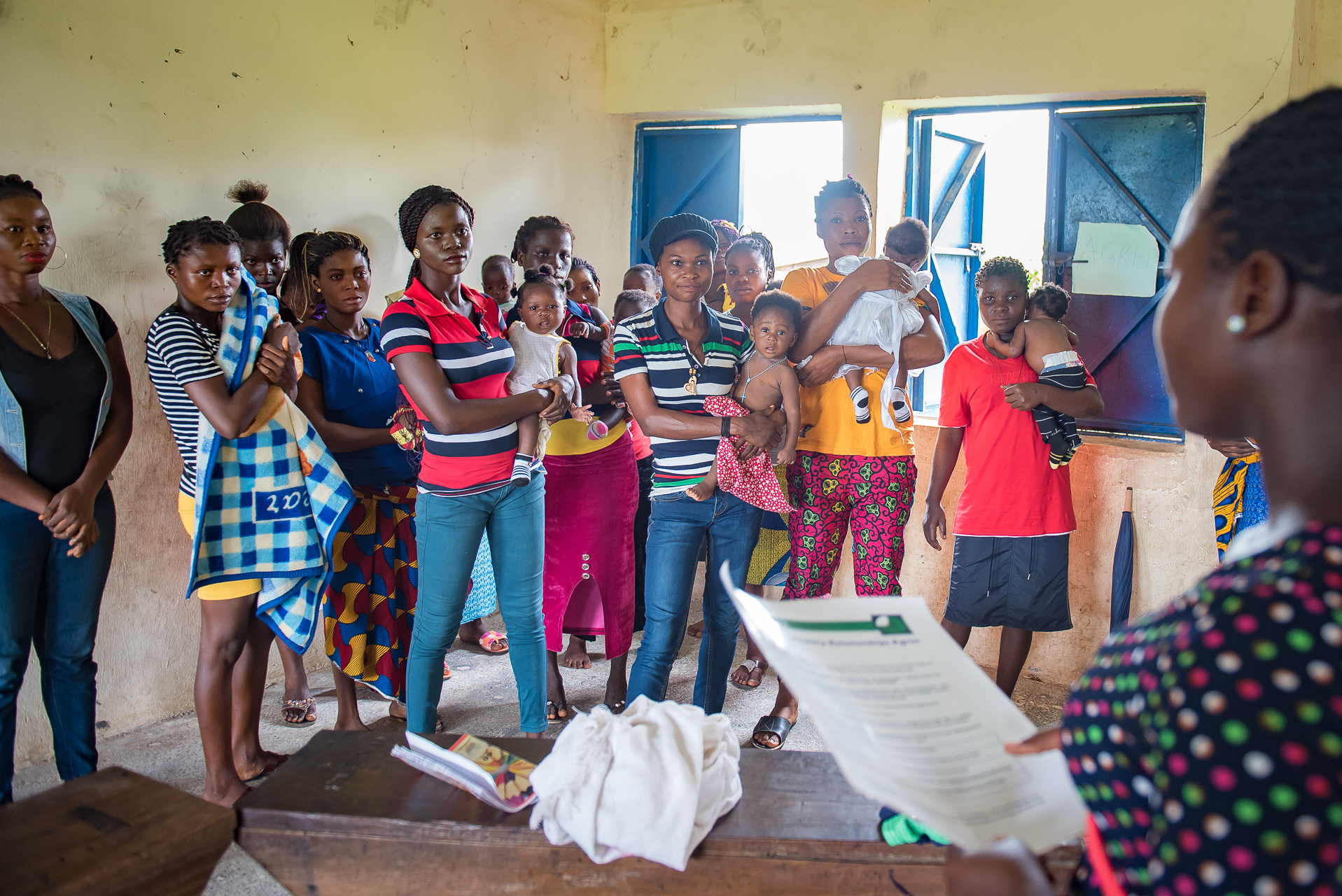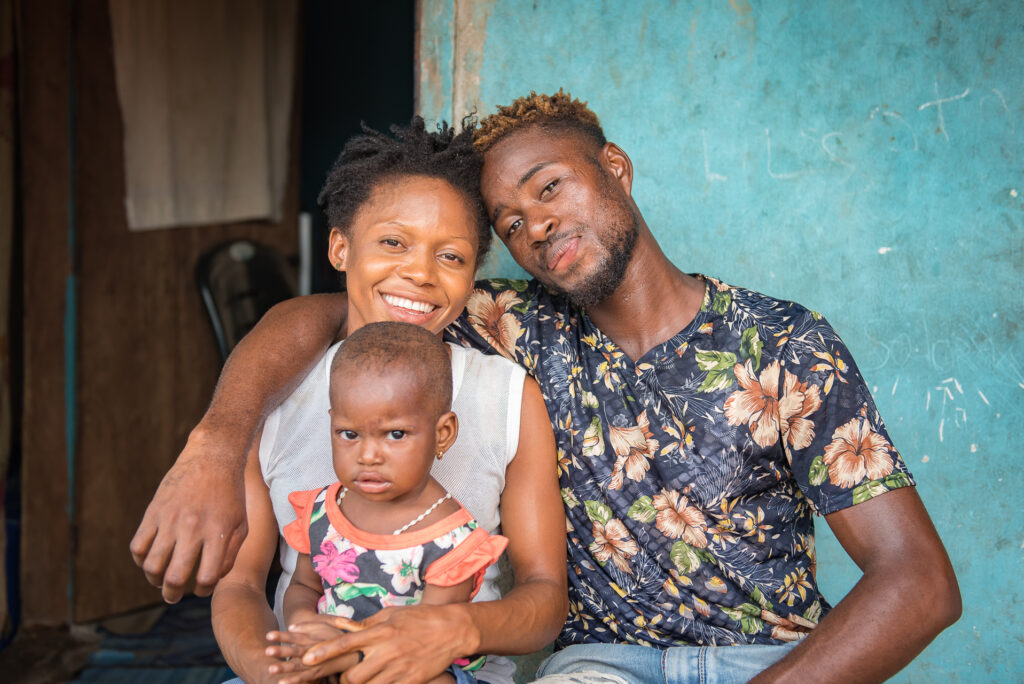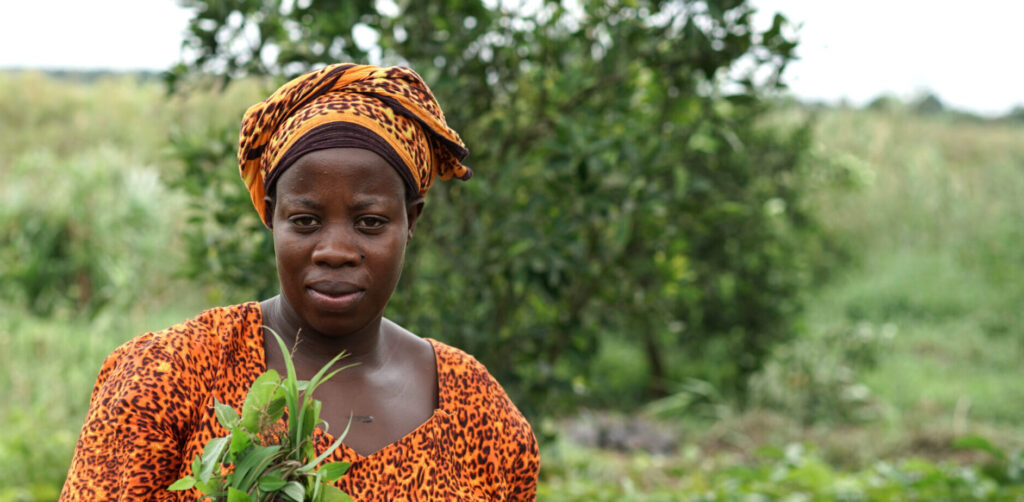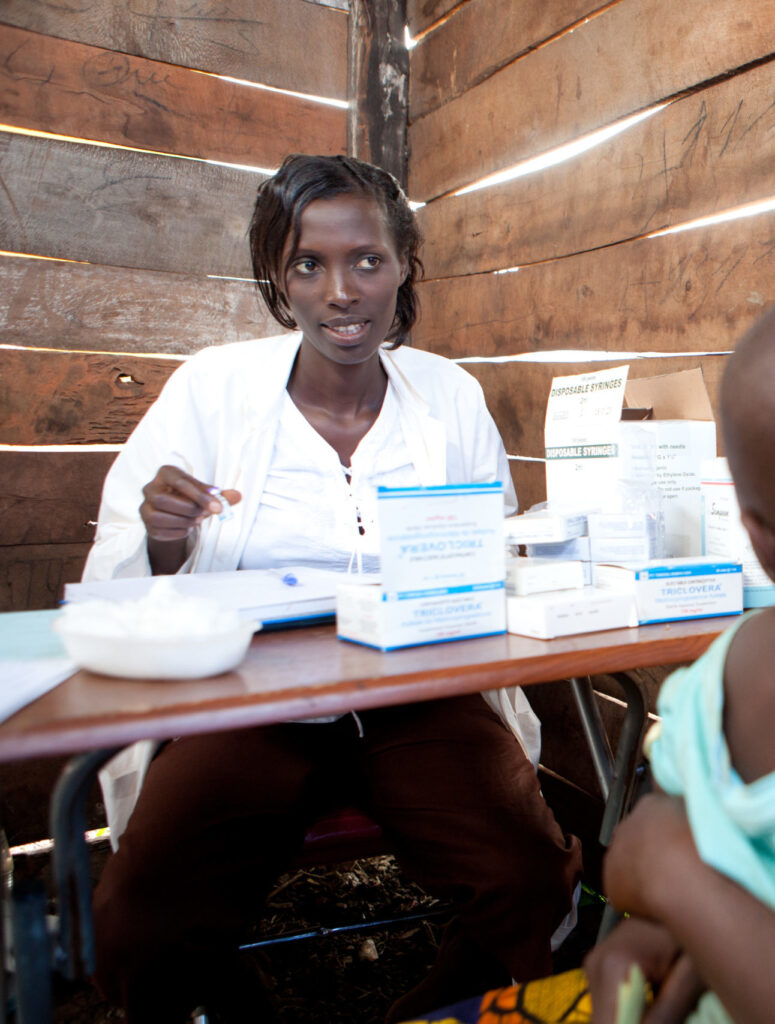
Evidence to Action
Resources Hub

On this page, readers can find a full catalog of useful resources—study reports, technical reports, policy briefs, program briefs, technical briefs, fact sheets, tools and peer-reviewed journal articles—from Evidence to Action (E2A). In addition, read and download “E2A Project Final Report: Driving the Next Generation of Global Family Planning Programs.”
Resource Categories

Youth
For E2A, young people were much more than a key population in need of information and health care. They were our valued partners and, increasingly, our priority in nearly every country where we worked. Our support for young people (ages 15–24) was cross-cutting and driven by four basic principles: (1) recognizing the diversity of youth and their corresponding needs, (2) cultivating youth participation and leadership, (3) utilizing socio-ecological model to guide our overall strategy for the improvement of adolescent and youth reproductive health, and (4) employing a gender-transformative approach.
We intentionally focused on uniquely vulnerable youth populations, like first-time mothers and fathers, who are often starting their reproductive lives without critical information and health services. By promoting a carefully sequenced package of information and services, our programs addressed the immediate reproductive health needs of young first-time parents and facilitated their action to improve their families’ wellbeing and future.
Credit: Sandra Samuel, Wisdom Bassey and their daughter. Photo: Seun Asala
- Addressing the Reproductive, Maternal, and Child Health and Family Planning Needs of Young, First-Time Parents in Burkina Faso
- Assessing the Effects of mCenas! SMS Education on Knowledge, Attitudes, and Self-Efficacy Related to Contraception Among Youth in Mozambique
- A Time of Uncertainty and Opportunity: Findings From a Formative Assessment of First-Time Parents
- A Whole-System Approach to Saving Mothers in Cross River State, Nigeria
- Conducting Home Visits and Providing Counseling and Contraceptive Services
- Evaluation of Youth-Friendly Health Services in Malawi
- Expanding Method Choice, and Access to Contraceptive Information and Services for First-Time Mothers in Shinyanga District, Tanzania
- Exploring the Contraceptive Use Histories and Decision-Making Processes of First-Time Parents in Western Tanzania
- FP2020 Commitments at the 2017 London Summit
- Generating Evidence to Meet the Sexual and Reproductive Health Needs of Students at Kenyatta University and Beyond
- Using the Global Consensus Statement on Expanding Contraceptive Choice for Youth
- Improving Family Planning Outcomes for First-Time Parents in the Greater Mahale Ecosystem of Tanzania
- Improving Health and Gender Outcomes for First-Time Parents in Cross River State, Nigeria
- Increasing Access to Contraceptive Information and Services for First-Time Mothers in Akwa Ibom, Nigeria
- Introducing E2A’s First-Time Parent Framework
- Key Insights for First-Time Parent Programs
- Reaching Young First-Time Parents for the Healthy Spacing of Second and Subsequent Pregnancies
- Planning for Systematic Scale-Up of Immediate Postpartum Family Planning in the Agneby-Tiassa-Mé Health Region of Côte d’Ivoire
- Planning for the Scale-Up of Postabortion Family Planning for Adolescents and Youth in Senegal
- Prospects and Challenges of Harnessing Demographic Dividend in Tanzania
- Training for Community Health Workers: Providing Reproductive Health Services to Young Married Women & First-time Parents in West Africa
- Senegal Youth-Friendly Reproductive Health Services Assessment in Six Regions
- Training for Facilitators: Small Group Facilitation for Young First-Time Mothers in Akwa Ibom, Nigeria
- Training for Facilitators: Small Group Facilitation for Young Married Women and First-time Parents in West Africa
- The Training Resource Package for Pre-Service Education in Family Planning and Adolescent and Youth Sexual and Reproductive Health
- The Use of Narrative for Behavior Change in Adolescent and Youth Sexual and Reproductive Health
- University Leadership for Change: Adapting and Scaling to the Community Level
- University Leadership for Change in Sexual and Reproductive Health in Niger
- Using TARP to Inform the Development of Family Planning Strategy
- Utilizing a Three-Step Process to Remove Barriers to Youth Behavior Change
- Working Together to Realize Young People’s Rights

Broadening Family Planning Impact
The 2030 Sustainable Development Agenda recognizes the transformative benefits of voluntary family planning—for people, the planet, and prosperity. When women and couples can exercise their right to freely decide whether, when, and how many children they want to have, the whole world benefits. Universal access to family planning contributes to broader development goals, including women’s and girls’ empowerment, gender equality, poverty reduction, and environmental sustainability. And, as demonstrated by E2A’s work across Africa to define, refine, apply, and scale up family planning best practices, we have learned how to focus family planning resources to have the greatest impact.
E2A seized opportunities to broaden the impact of family planning by creating synergistic and mutually beneficial partnerships across sectors, closing evidence gaps, addressing emerging health threats, and engaging stakeholders who are often left behind. Explore our publications below to see what happens when a global family planning program says, “No more missed opportunities.”
Credit: Fausta Najjuuko, Bussi Island, Uganda. Photo: Maren Vespia
- Applying ExpandNet’s Systematic Approach to Scaling Up in an Integrated Population, Health and Environment Project in East Africa
- Assessing Use of Data to Improve Delivery of Family Planning, Reproductive Health, and Other Health Services at the Community Level in Ethiopia
- Assessment of Postabortion Care Services in Four Francophone West Africa Countries
- Couple-Based Approaches in Reproductive Health: Implications for Global Policy, Practice, and Research
- Couple-Focused Interventions: A Theory of Change
- Creating Lasting Change: A Case of the HOPE-LVB Project
- Deploying Religious Leaders’ Support to Advance Contraceptive Use in Tanzania
- Ethiopian Evangelical Church Mekane Yesus Mobilizes Faith-Based Networks to Promote and Deliver Family Planning Services
- Exploring Couple Dynamics with First-Time Parents
- HoPE-LVB Toolkit
- HoPE-LVB Training Manual: Implementing Integrated PHE Interventions in the Lake Victoria Basin
- Institutionalizing of Integrated Programming into Government Systems: A View of Homa Bay County
- Linking Family Planning to Resilience in the Sahel: Findings from an Integrated Pilot Project in Zinder, Niger
- Post-Intervention Health Facility Assessment of Emergency Obstetric & Neonatal Care of the SMGL-Supported Facilities
- Pre-Intervention Health Facility Assessment of Emergency Obstetric Care in Cross River State, Nigeria
- Prioritizing Health Needs: Institutionalizing Integration Through Population, Health, and Environment Advocacy in East Africa
- Strengthening FP/RH and Poverty Reduction Interventions through Political Parties’ General Elections Manifestos in Tanzania
- Strengthening the Delivery of Family Planning Services Among Faith-Based Organizations in Africa
- Strengthening the Response to Sexual and Gender-Based Violence in Nigeria
- Sustainability of Management Approaches Supported by the Integrated Family Health Program in Ethiopia
- Sustaining Health, Rights and the Environment in the Lake Victoria Basin
- The Training Resource Package for Family Planning: Strengthening Family Planning Training for Nurses and Midwives in Tanzania and Uganda

Scale
Since E2A’s inception, we made it our mission to help introduce or scale up best practices in family planning and reproductive health service delivery for women and girls. This meant taking deliberate steps to increase the impact of innovations successfully tested in pilot projects, so they could benefit more people and foster lasting improvements in health policies and programs.
Scale-up should not be left to chance. It requires a systematic process that begins at the design stage and continues throughout the life of a project. E2A and our partners—led by scale-up leader ExpandNet—gained significant experience applying this systematic scale-up approach across multiple countries. In the Democratic Republic of the Congo (DRC), Côte d’Ivoire, Kenya, Niger, Nigeria, Senegal, Togo, and Uganda, our scale-up approaches were adopted by governments, institutions, and implementing organizations. Together with partners across Africa, we successfully scaled up numerous best practices, including community-based family planning; innovative peer education approaches for youth, integrated population, health, and environment activities; and task-shifting and task-sharing to expand method choice.
We believe systematic scale-up is one of the keys to achieving global family planning goals. Explore our publications below to see why.
Credit: In Côte d’Ivoire, Pathfinder and its partners support the Ministry of Health to increase access to quality reproductive health services. Photo: Courtney Boudreau
- Bibliography Systematic Approaches for Scale up of Best Practices
- The Centers of Excellence for Practical Learning Initiative: Improving Family Planning Training & Preparing for Scale-Up
- Expansion of Community-Based Family Planning in the DRC: Using a Systematic Approach to Scale-Up
- Improving Access to Contraception in Akwa Ibom State, Nigeria
- Lessons Learned from the Systematic Scale-Up of Family Planning Task-Shifting and Task-Sharing in Cross River State, Nigeria
- Pioneering Tools for Adapting Family Planning and Reproductive Health Interventions in Complex, Dynamic Environments
- Planning for Systematic Scale-Up of Immediate Postpartum Family Planning in the Agneby-Tiassa-Mé Health Region of Côte d’Ivoire
- Planning for the Scale-Up of Postabortion Family Planning for Adolescents and Youth in Senegal
- Scaling-Up Community-Based Counseling and Distribution of DMPA-SC in the DRC
- Uganda Improvement Collaborative: Integration of Family Planning into Maternal and Neonatal Health Programming
- Uplifting Rural Communities: Building a Scalable Model for Community-Based Family Planning in Democratic Republic of the Congo
- Utilizing a Three-Step Process to Remove Barriers to Youth Behavior Change
- Youth Participatory Action Research in Niger

Method Choice
Family planning is one of the best and most cost-effective investments in international development. Supporting women and couples to freely decide whether and when to have children provides more than just immediate health and family life benefits. It also helps countries achieve stability, increase economic and social opportunity, expand the civic space to include more women, and promote social accountability between governments and civil societies.
As USAID’s global flagship for strengthening family planning and reproductive health service delivery, we were fiercely committed to expanding access to a full range of contraceptive options with special attention to the promotion of client-centered, voluntary, and informed choice. Across 17 countries, through our family planning programs, scale-up initiatives, and strategic partnerships across the globe, we infused method choice in everything we did. We believe method choice is a reproductive right: everyone should have access to contraceptives that will help them achieve their reproductive intentions.
Credit: A health worker explains oral contraceptive pills to a client in Muyinga province, Burundi. Credit: Sala Lewis
- Assessing the Feasibility of Including Removal Indicators for LARCs in Mozambique’s National Family Planning Registers
- Building Evidence to Support the Provision of Implants at the Community Level through Task Sharing
- Emergency Contraception: Four Country Case Studies on the Introduction and Scale-up
- Expansion of Family Planning Method Mix Through the Introduction of Community-Based Provision of Standard Days Method Using CycleBeads in Shinyanga Region of Tanzania
- Strengthening Community-Based Family Planning Services in Shinyanga, Tanzania
- Task-Sharing and Other Community-Based Innovations that Increase Access to Injectables and Implants
- Testing a Service-Delivery Model for Offering LARC Methods to Youth in Ethiopia
- Training to Improve Quality and Access to Contraceptive Implants in Burundi’s Kayanza and Muyinga Provinces
- Uganda Protestant Medical Bureau Increases Contraceptive Method Choice and Uptake of Family Planning Services
- Uptake of LARCs Amongst New Users: Testing a Service-Delivery Model for Youth in Ethiopia
- Using the Global Consensus Statement on Expanding Contraceptive Choice for Youth